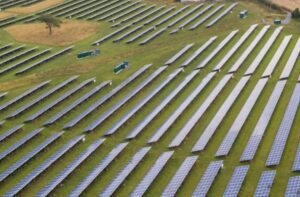Output from wind and solar have surged to two new record highs in the National Electricity Market over the past 24 hours, with sunny and windy conditions combined to push their combined output towards 12 gigawatts, or nearly 50 per cent of total demand.
The Australian Energy Market Operator, which recently released its 20-year blueprint mapping a path to up to 94 per cent renewables by 2040, celebrated the first record with a Tweet that noted the combined output of wind farms, and small and large-scale solar generation, exceeded 11,700MW for the first time.
That smashed a record set back in November 2019, where combined wind and solar output hit 11,300MW.
But it has taken less than 24-hours for the record to be broken yet again.
According to OpenNEM, the combined output from wind and solar sources surged to a new high shortly before 11am, pushing past 11,830MW of combined output. It might have been even higher, given the delays and constraints that have had a heavy impact on wind and solar developers, and by industry estimates has reduced the anticipated output by an average of more than 700MW.
At noon on Friday, renewables (including hydro) supplied 48.6 per cent of all electricity generated in the National Electricity Market, which covers New South Wales, Victoria, Queensland, South Australia, Tasmania and the ACT. The prevailing conditions could see the market share of renewables surpass 50 per cent for the first time since 2019 over the coming weekend as demand reduces.
Over the last 24-hours, hydroelectric power stations have averaged a further 1,400MW of output, averaging 3 to 4 per cent of total generation.
Well that didn't last long 😂
(over 11.8 GW earlier today) https://t.co/Vjye8ey5lW pic.twitter.com/e5uggaYrSg
— Dylan McConnell (@dylanjmcconnell) August 21, 2020
Renewable energy output across the entirety of the NEM has averaged more than 33 per cent over the last 24-hours, with windy yet sunny conditions prevailing across Australia’s eastern states, and is approaching a new daily record, which was set on 12 November 2019 at 34.3 per cent.
The record has been enabled by optimal weather conditions, with a strong low sitting south of Tasmania, which has brought strong winds to Australia’s southern regions. Meanwhile a strong high sits above Queensland, providing ideal conditions for solar output in Queensland and New South Wales.
While the weather is bringing icy conditions for residents of Tasmania and Victoria, it’s an ideal situation for taking advantage of where Australia’s wind and solar projects are located.
The last 24-hours has seen surging supplies of wind generation in South Australia, which averaged above 75 per cent of overall supply, including periods were all electricity produced in South Australia came from wind farms. Rooftop solar has also supplied more than a third of South Australia’s electricity generation throughout the day on Friday.
Wind has also been a strong contributor in both Tasmania and Victoria, where wind energy has supplied around a quarter each state’s electricity generation, fuelled by Antarctic winds.
Solar has dominated the supply of electricity in Queensland, approaching 50 per cent of total supply during some periods on Friday.
Wind and solar have also supplied around a quarter of New South Wales’ electricity supplies, but the share has been split relatively evenly between the two sources.
AEMO Chief System Design and Engineering Officer, Alex Wonhas, said that the new records were a reflection of the number of new wind and solar projects that had successfully been brought online over the last couple of years.
“Yesterday’s new record of instantaneous renewable generation highlights the changing supply mix throughout the electricity market,” Wonhas said. In the last six months, we’ve commissioned five new wind and solar farms with a generation capacity of 580 megawatts (MW) that are feeding into the NEM, and another seven committed projects working towards construction of a further 1,785 MW.”
AEMO noted that the new records closely follow the release of its Integrated System Plan, which estimated that a further 26,000MW of additional wind and solar capacity will be needed to replace electricity currently being generated by coal-fired power stations. Around two-thirds of Australia’s coal-fired power stations are expected to close by 2040.








